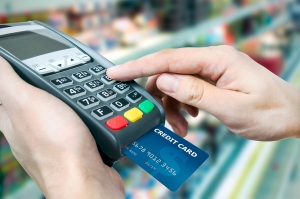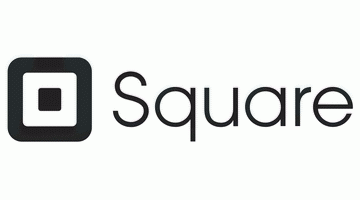Updated on November 22, 2021
Despite the many payment options which are available to customers nowadays, credit card is still the leading payment method. In fact according to the consumer payment study which was conducted in 2016, this was the first time credit card lead as the most preferred way of making payment, thereby replacing debit as the number-one choice in years past. However, it may not last longer because technological advances and the preferences of Millennials is changing on daily basis. Having that in mind, here is the current state of the credit card processing industry for 2017.
Millennials


For starters, they are the largest customer base, are educated and hyper-connected, they don’t want debt. According to the survey which was made by Bankrate, only 33 percent of millennial between the age of 18 and 29 have a credit card. This value is the lowest among any demographic.
Kristian Rivers who is a digital marketing specialist in New York City said “I have never owned or ever wanted to own a credit card.” This is not a decision which I made, but when I was growing up, I was warned about the risk of having a credit card and advised to put off getting one as long as possible.
Rather than plastic, Millennials are turning to companies such as Apple, Google, Amazon, PayPal, or Square that provide them with digital service, personalization as well as availability to real-time data.
In order to appeal with this demographic, Scott Blum, who is the leader of marketing, Business Development and integrated Payments for Total Merchant Service, believes that “payment providers would be able to find new ways by which they can differentiate and also offer value to their customers beyond low rates.” One of this involves the use of innovative technologies to create loyalty programs, provide real-time offers, manage mobile wallets and discount and also push notifications.
In With the New, Out With the Old
Rather than swiping credit cards or entering customer’s card information manually, merchant should be looking at new and exciting way by which they can process payments, this include:
Near Field Communication or Bluetooth Low Energy


Since most mobile wallet makes use of two-factor verification, it is secure to process payments this way. It is also fast and affordable for merchant to receive mobile wallet payments. For instance, Due charges a low, flat 2.8 percent transaction fee no matter where the payment is coming from in the world.
Bluetooth Low Energy (BLE) is also similar to NFC. As it was explained by the founder John Rampton, BLE “takes place on either the consumer or merchant’s device where data is stored in a mobile payment account. Example of such includes iBeacon and PayPal’s beacon.”
Rampton said “Merchants are using NFC and BLE that connect mobile devices with either NFC or beacons tags.” “With BLE, the transaction is continuous and can be utilized in large areas so that customers would be able to receive notification and coupons. NFC must be activated by customers and is perfect for one-on-one interactions.”
Payment Applications
Apart from NFC and BLE technology can also process card payment with payment apps. For instance, LevelUp allows customers to place a food order and make a payment through their smartphone so that they will skip the line completely. Uptick is also present in peer-to-peer payment apps like Venmo, Square Cash, PayPal, Circle, and ClearXChange, which give customers the power to transfer to a third party from their credit or debit card.
Social media networks such as Facebook and Snapcash also offer p2p transfer with Facebook’s Messenger and Snapcash.
All-in-One Cloud-Based Payment Processing Systems
Some companies such as Due, Square and ChargePass realized that for merchant to be competitive, they need to have many processing options. That’s why these companies have created all-in-one processing services that would allow merchants to process credit cards online via web portal and in-person with the aid of mobile card readers and credit card terminals.
In addition, these systems are also expected to track the sales, inventory as well as employee performance. Since all these information are available on the cloud, it is accessible from anywhere and at any time.
Scanning and Selfie Payments
Companies like Flint are revolutionizing the credit card processing industry by scanning a customer’s credit card. The merchant will only have to snap the picture of the credit card and the information will be encrypted. Also, security should not be a problem because the card information is nor stored on the device.
In addition, MasterCard has started rolling out Identity Check Mobile with which customers can verify payment by taking a selfie.
These are two examples of companies who are using technology to create frictionless as well as secure processing methods.
Continued EMV Adoption
EMD did not have smoothest adoption in the first year. However despite the fact that 70 percent of U.S credit card holders possess EMV chip cards, retailers who have adopted the technology falls between 22 and 37 percent. Rob Cameron said that consumer have the chip-enabled cards and are looking to use them, Cameron is the chief product and marketing officer at Moneries which is one of the largest processor of debit and credit card in North America. It is certain that we have seen an increase in interest from our merchants in moving towards EMV-enabled terminals.
There is no reason for this scenario but it is because businesses do not want to replace their current terminals and they have waited to certify their systems.
“In the actual sense, it is time for the banks as well as card industry to step up,” said J. Craig Shearman of trade group the National Retail Federation. Some of our members have to wait for months so as to clarify their systems. And if this is fully installed, the new card would not do as much as they could. Without a pin a thief would still be able to scribble any illegible scrawl and walk away with merchandise.
For other businesses, the switch to EMV means making a major upgrade. For instance, Visa and MasterCard extended “the deadline for installing chip-card readers in U.S. gasoline pump because station owners have complained that they did not have enough time for the completion of such multibillion-dollar project.”
Despite the setback, EMV will definitely stay and we foresee more retailers making the switch over the next couple of years. Apart from the improvement in the security of customers, EMV terminals are mostly equipped with NFC technology so that merchant would be able to process card via contactless methods. Because of this, you should expect to see the emergence of contactless payments.
Sherif Samy, the managing director, Transaction Security Operations, at UL said that “security is related to what you want to protect. If you are in an environment where high ticket item is to be purchased, such as flat screen television, you won’t want to do that with contactless transaction.” “If you want to buy coffee, no one would steal a coffee? In this case, you can afford to go with a starbuck model of having QR codes or contactless transactions. It all depends on your risk appetite as well as what you are trying to protect.”
Zilvinas Bareisis who is the senior analyst at Celent added that “Although the consumer adoption of various contactless pays, such as Apple Pay and others has yet to set the world on fire, perhaps they will end up giving another reason for merchants to invest into chip terminals.”
The Future of Credit Card Processing
The customer as well as merchant expects payment to be processed quickly and in a convenient way. Moreover, about 25 percent of organizations have ceased to accept cash in 2015. With the continual management of funds electronically and synching their cards to their mobile devices, the credit card processing industry is gradually moving towards contactless payments methods that are secure and convenient, a big thanks to techniques like encryption, tokenization, and biometrics.


